The Pacific Music Festival “Petronio Álvarez” is a festival dedicated to the music of the Colombian Pacific Folklore (department of Chocó, and the coastal areas of the departments of Valle del Cauca, Cauca and Nariño.)
The festival
It takes place in the city of Santiago de Cali, Colombia, in August. The idea is to highlight composers, musical groups and researchers of Afro-Colombian music. This event is organized by local institutions related to culture and promoted by the Secretary of Culture and Tourism of the Mayor’s Office of Santiago de Cali.
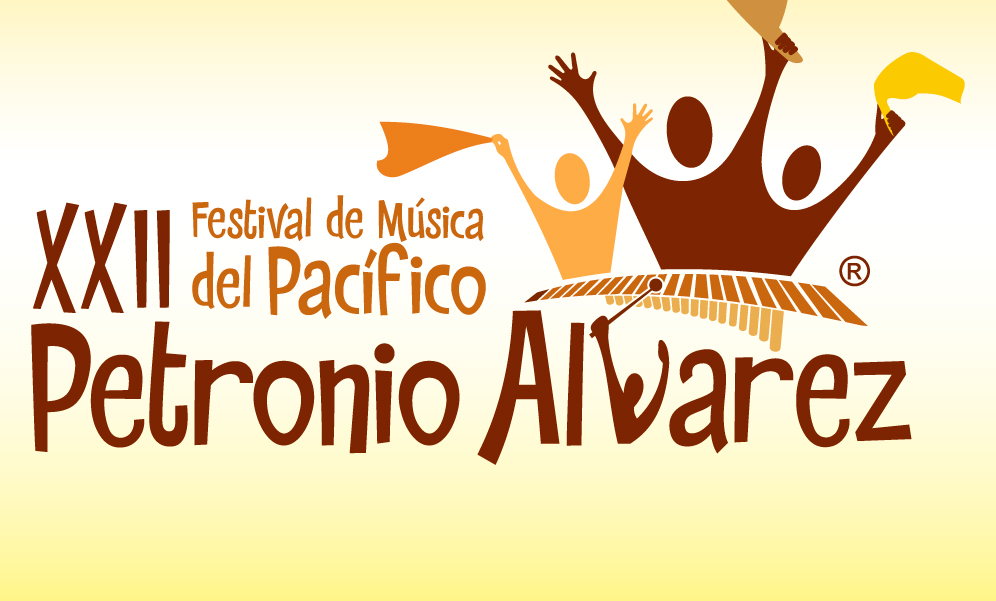
It is a space in which music, cooking, crafts, and other elements that accents the Afro essence are proudly represented and highlighted.
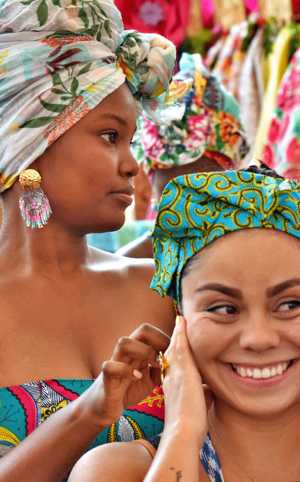
The sounds of the marimbas, chirimías and cauca violins will echo in Cali. The beauty and Afro attitude springs from the pores of all its participants and visitors.
This festival saw its beginnings on August 9, 1996. And, from that moment on, the capital of Valle del Cauca becomes, through the event, a bridge of music from different communities in the Pacific.
It is a space in which we connect with our African roots. In which we can enjoy music and gastronomy.
A space in which the culture of the Pacific is highlighted and artists, whether recognised or not, are presented to the masses.
Like many factors of this festival, everything has a background. For example, the name of the festival is a symbolic act that acknowledges and pays homage to Bonaverense musician Patricio Romano Petronio Álvarez Quintero (1914 – 1966). Born in Buenaventura since childhood, he dreamed of music and was his main passion.

Food and drinks
In terms of food, the stands with the best of the Pacific gastronomy were available to thousands of visitors to the citadel of the event.
Likewise, the drinks offered are of ancestral character. We refer to the viche, arrechón and tumbacatre. Drinks that are said to be both aphrodisiac and medicinal.
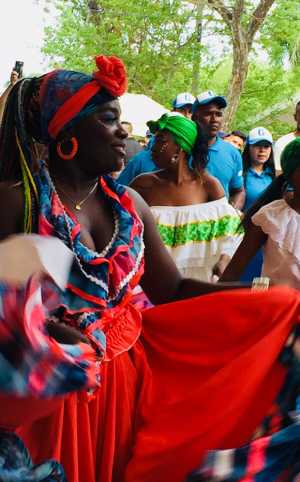
Of the first things to keep in mind, is that traditions must be respected and maintained. In this case, the turban plays a key role.
The turban symbolizes party. The handkerchief on the Pacific littoral symbolizes peace. With the currulao dance, the man falls in love with the woman.
The festival is much more than music, food and dance. It is a representation of our communities, of traditions. For this reason, the lexicon is key.
The words most used by black communities in Colombia are heard constantly during the Petronio. There are many, they are varied and some of them are:
Agonía: A trusted person, friend or brother. It can also be the term to refer to the person who drinks at meetings and parties without providing money for the liquor..
Ambulú: Expression that indicates that someone fell for a joke.
Bambao: Person who dresses well, with expensive clothes, chains, rings and watches..
Bambiar: Shake, violently move something from one part to another.
Cambambero: Cheerful and friendly person fond of dancing.
Guascoso: Rebel, difficult person who has difficulty following orders.
Guereguere: Crispetas, roasted and burnt corn rosette.
Guillar: French kissing someone.
Sambita: thin girl.
Tapiado: Corpulent person.
Viche: Traditional Colombian Pacific liqueur made with sugar cane.
The mulato and the black race predominate in the Colombian pacific zone. So, the Afro culture has been mixing so perfectly for centuries in our lands. A culture that fills us with life and strength.

The first versions of the festival was held at the Los Cristales open-air theater. Then and until 2010 the Plaza de Toros wasits home. In 2011, it was held at the Pascual Guerrero Olympic Stadium and since 2012 it has been held at the Pan American Sports Unit.
As time has gone by, the Petronio Álvarez Festival has become one of the most important cultural events in the Valle del Cauca.
It is a great event, beautiful, happy, you can see the best from the Pacific… for me its even better than La Feria de Cali.
Showcasing artists
One of its strong points is the magnificent support artists receive. Thanks to this, they are kept in the mix. Musicians, craftsman and spectators from all corners of the country come together to witness and participate in this event that year after year allows them to enjoy the culture of the region.
Amongst its categories there are marimba, chirimía, free, unknow song, best vocals, marimba singer and clarinet interpreter. In the latest version violins have been included.
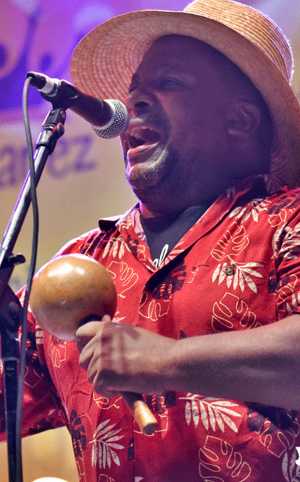
Going into a bit of detail about the fundamental instruments in this festival we should try to recognize the differences between them.
The marimba is a percussion instrument that resembles the xylophone. The term marimba comes from the Bantú marimba or malimba.
The marimba music and traditional songs and dances of the Colombian South Pacific region were inscribed in 2010 on the representative list of the Intangible Cultural Heritage of Humanity of Unesco.
The chirimía is a musical style of the center-north of Chocó. It is necessary to understand that chirimia has two meanings in Colombian folklore.
On the one hand, it is a wooden instrument that sounds bastantae similar to the bagpipes. On the other hand, it was also called the melody that was reinforced by the flutes of cane.
Eighty percent of the groups competing come from regions such as: El Bordo, Suarez, Buenaventura, Timbiquí, Tadó, Almaguer, Guapi, Iscuandé or Barbacoas.
Having established this, it should be noted that the Colombian Pacific is a spectacle in itself. It is filled with magic. A place where orality is the axis of cultural dynamics and life.

From generation to generation
Parents teach their children to play instruments, the lyrics of songs, dances, hairstyles and how to wear turbans.
Myths and legends that go from the jungle to the river and reach the sea are also taught; the funeral rites and the tenths.
A special tribute was paid to one of the most renowned instrument builders, musician and cultural manager of the Colombian Pacific: maestro Baudilio Guama, from Buenaventura.
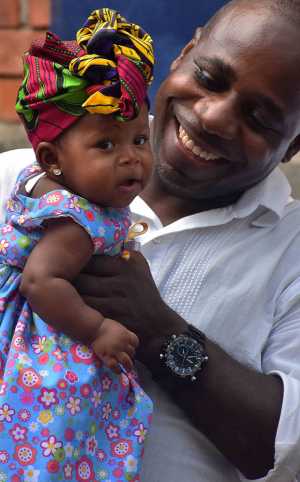
For the first time a ‘marimbeada’ was performed, a show in which 15 marimbas will be performed together.
In the current edition, 2019, a total of seventeen groups left the heart on stage. The audience danced to the sound of marimbas, drums and violins.
Without a doubt, this is one of the most anticipated events in the region and country. It is a festival that has aroused national and international interest. At the Petronius Citadel, at least fourty thousand people enjoyed themselves. 200 stands were located in which different traditional expressions were presented. The challenge is to maintain an event that remains a symbol of coexistence, that has the best organization and that is a tribute to the music and culture of the Pacific.


